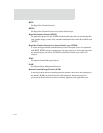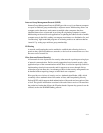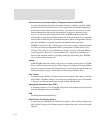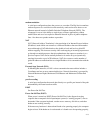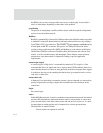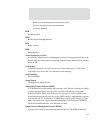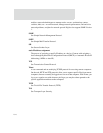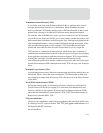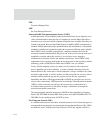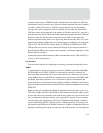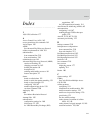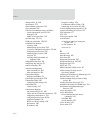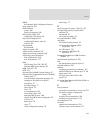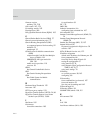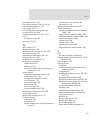
238
TXD
Transmit eXchange Data.
UDP
See User Datagram Protocol.
Universal Mobile Telecommunications Service (UMTS)
A third-generation (3G) broadband, packet-based transmission of text, digitized voice,
video, and multimedia at data rates up to 2 megabits per second (Mbps) that offers a
consistent set of services to mobile computer and phone users no matter where they are
located in the world. Based on the Global System for Mobile (GSM) communication
standard, UMTS, endorsed by major standards bodies and manufacturers, is the planned
standard for mobile users around the world and is at present still being made available.
Once UMTS is fully available geographically, computer and phone users can be
constantly attached to the Internet as they travel and, as they roam, have the same set of
capabilities no matter where they travel to. Users will have access through a
combination of terrestrial wireless and satellite transmissions. Until UMTS is fully
implemented, users can have multi-mode devices that switch to the currently available
technology (such as GSM 900 and 1800) where UMTS is not yet available.
Today's cellular telephone systems are mainly circuit-switched, with connections
always dependent on circuit availability. A packet-switched connection, using the
Internet Protocol (IP), means that a virtual connection is always available to any other
end point in the network. It will also make it possible to provide new services, such as
alternative billing methods (pay-per-bit, pay-per-session, flat rate, asymmetric
bandwidth, and others). The higher bandwidth of UMTS also promises new services,
such as video conferencing. UMTS promises to realize the Virtual Home Environment
(VHE) in which a roaming user can have the same services to which the user is
accustomed when at home or in the office, through a combination of transparent
terrestrial and satellite connections.
The electromagnetic radiation spectrum for UMTS has been identified as frequency
bands 1885-2025 MHz for future IMT-2000 systems, and 1980-2010 MHz and 2170-
2200 MHz for the satellite portion of UMTS systems.
User Datagram Protocol (UDP)
A communications protocol that offers a limited amount of service when messages are
exchanged between computers in a network that uses the Internet Protocol (IP). UDP is
an alternative to the Transmission Control Protocol (TCP) and, together with IP, is



